EMANATIONS: The Art of the Cameraless Photograph
A 2016 exhibition at the Govett-Brewster Art Gallery’s Len Lye Centre, featuring the world's first fully historical survey of cameraless photography.
29 April 29–14 August 2016, Len Lye Centre, Govett-Brewster Art Gallery
Curated by Geoffrey Batchen, Professor of Art History at Victoria University of Wellington, April 29–August 14, 2016, Len Lye Centre, Govett-Brewster Art Gallery.
The exhibition contained about 200 works, filling all the museum’s spaces (including both ramps) except for the Large Works Gallery (which displayed Len Lye’s Four Fountains).
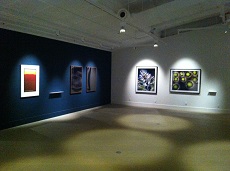
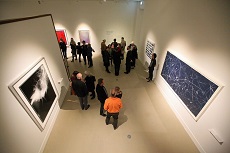
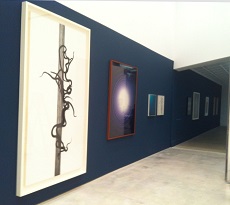
What is a cameraless photograph?
A cameraless photograph is a contact print in which something (such as a botanical specimen or a piece of clothing or even just directed rays of light) is made to touch a piece of light-sensitive film or paper and leave an impression, without the mediation of a camera.
The earliest surviving photographs, from the 1820s, were made in this way. This is also the first type of photograph most people made during the analog era, whenever someone was introduced to photographic chemistry.
This, then, is photography in its most essential and primordial form.
A cameraless photograph usually reproduces its subject as a reversed-tone image (what we would also call a negative), so that this subject appears to be emanating its own light (hence the title of the exhibition).
Although cameraless photographs can look as though they are abstract pictures, they are in fact the most realist kind of photograph; in them, the world is allowed to represent itself as itself.
Why is this exhibition important?
This was the first fully historical survey of cameraless photography held anywhere in the world, presenting examples of this kind of photograph from 1839 (when photography’s invention was announced) to now.
It was first time a global history of art had been prepared and displayed by a museum in New Zealand. It was the first time such a history has included a significant number of artists from Australia and New Zealand.
The exhibition presented work by over 50 artists, hailing from New Zealand, Australia, Japan, Poland, Czechoslovakia, Hungary, France, Germany, Italy, England, Canada and the United States.
The exhibition included many masterpieces of photographic art never before seen in New Zealand and showcased the talents of some of the world’s leading contemporary photographic artists.
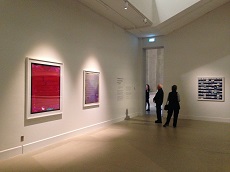
It, for example, included work by photographic pioneers William Henry Fox Talbot and Anna Atkins, by important modernist photographers Man Ray and László Moholy-Nagy, and by some of today’s most significant photographic artists, such as Christian Marclay, Thomas Ruff, Joan Fontcuberta, Walead Beshty, Marco Breuer and Liz Deschenes.
It also included work by both senior and emerging Australian and New Zealand artists, from Anne Noble and Anne Ferran to Andrew Beck and Justine Varga.
The exhibition included examples of almost every photographic process, including photogenic drawings, calotypes, daguerreotypes, and tintypes, as well as gelatin silver, chromogenic and ink-jet photographic prints. It also included photocopies, and verifax and thermal prints.
Why is this exhibition being held at the Govett-Brewster?
The work of Len Lye forms the heart of the exhibition, being its largest and most prominent component.
This is the first time ever that all 52 of Lye’s own cameraless photographs (made in 1930 and 1947) are on display.
This exhibition is an opportunity to put Lye’s photographic work in a suitably global context, surrounded by his predecessors, contemporaries and successors. The exhibition contains a significant number of key international works from the 1920s, 30s, and 40s, when Lye was also working with this medium.
About a third of the exhibition comprises work made during the last twenty years, ably fulfilling the Govett-Brewster’s mission as a key contemporary art space.
Does the exhibition have a catalogue?
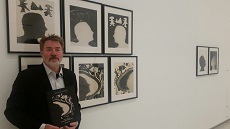
The exhibition is accompanied by the publication of a major book on the same theme being co-published by the Govett-Brewster and Prestel/DelMonico books, based in Germany and New York. The book contains 184 full-page colour plates and a 25,000 word essay by Geoffrey Batchen. It features work by a number of New Zealand and Australian artists as well as by other artists from around the world. The book had an initial print run of 20,000 copies and will be distributed worldwide. An image by Len Lye features on the cover of the New Zealand edition of the book.
The Govett-Brewster will also publish another book reproducing all the cameraless photographs by Len Lye, along with an essay by Roger Horrocks.
There will be a free fold-out poster to accompany the exhibition, with notes about and illustrations from the exhibition.
The exhibition itself will have over 60 captions on the wall, explaining how and in what context particular photographs have been made. These captions will also be available in a bound, large-print edition.
